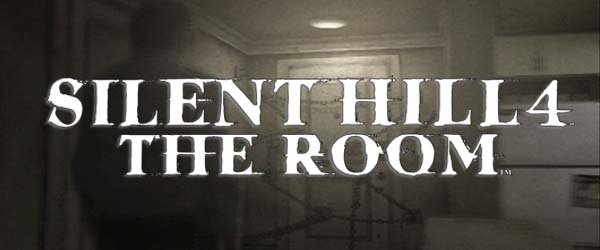
While I was playing through recent horror titles like The Evil Within, I noticed some interesting similarities with Silent Hill 4 that started to give me a new appreciation for some of this game's stronger aspects. In addition, while doing research for my Silent Hill timeline, I had to go back and play through Silent Hill 4: the Room again. I had only played through the game twice before, so I had to replay it in order to figure out how the timeline would work out. And while I was playing the game, I figured that I might as well go ahead and review it. At the time, it seemed like a novel idea to do a retro review of a Silent Hill game that wasn't Silent Hill 2, but lately, I've been seeing a lot of retro-reviews of The Room popping up other places. I haven't done any retro reviews yet; probably the closest thing has been my review of Demon's Souls. But in light of how unsuccessful the later Silent Hill games have been, the unfortunate cancellation of Silent Hills, and the uncertain future of the franchise (and of Konami as a studio), it's a good time to go back to look at what worked and what didn't about the previous games, and explore the question of whether we even want the franchise to continue.
The Room has the reputation of being the "bad" black sheep of the original Silent Hill tetralogy. I always thought that this reputation was unfortunate, and that the game wasn't quite as bad as people made it seem. I actually liked it better than Silent Hill 3 when I first played it, because I had never played the first Silent Hill. After I was able to track down a copy of the first game and play through it, Silent Hill 3 suddenly made a whole lot more sense, and I came to love it almost as much as I loved Silent Hill 2. So while I tend to agree that The Room is the "weakest" of the original Silent Hill games, I never really thought of it as being "bad"; just "less good". The release of future games by third party developers has only made The Room look better in retrospect.
An experimental formula
The game itself is a bit rough around the edges. It deviates significantly from the controls and mechanics established by the previous games in the franchise, and these changes are very hit-or-miss. This might be due, in part, to the possibility that The Room started out as an independent side project that was developed concurrently with Silent Hill 3, and that was eventually redesigned to work as a Silent Hill game in order to be more commercially viable. Whether or not that's true is still a hot issue of debate among the fanbase, but it's obvious to everybody that The Room plays a lot differently from previous titles.
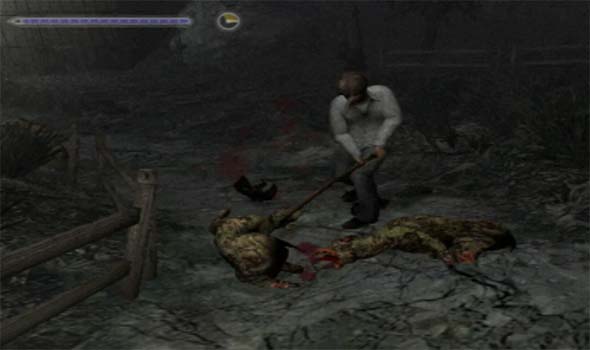
Movement and combat controls are radically changed from previous games in the series.
The most immediately obvious deviation is in movement and camera controls. The semi-first-person "tank" controls have been completely abandoned in favor of direct directional inputs, and the camera is significantly more limited than it has been in previous games. You can't snap the camera behind the character by holding the "look" button as you could do in previous games. Almost all camera angles are pre-set angles, and the player can usually only toggle between two possible camera angles in any given area.
This results in some very clumsy navigation of the environment, and it's very easy for the character to get turned around when camera angles flip. Most of the time, a camera change will go without a hitch, but there are a few frames in the game that consistently result in erratic and unpredictable movement. It happens most often when a camera change occurs concurrently with a change in direction of the character (to navigate around a corner or an obstacle). If the player's timing for changing the character's movement direction is not perfectly-timed, then the character ends up turning around, which can result in getting stuck in a loop between the two camera angles. This is the very reason that I prefer the tank controls. They may be a bit cumbersome, but at least they're consistent and always relative to a single frame of reference (the character's position in the world), rather than to an unpredictable camera.
The second major change is to combat. The game was designed to have a greater emphasis on melee combat, complete with new target-locking controls, a variety of breakable melee weapons, very limited ammunition for guns, and an on-screen meter for charging power attacks. The new movement controls do make it a bit easier to maneuver around enemies (especially multiple enemies), but only if you're in an open space and the camera angle doesn't go all wonky on you. The mechanics are serviceable, and I don't think they're as bad as some critics insist.
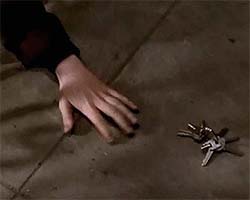
The designers were probably trying to mimic
the horror trope of fumbling for keys.
Inventory management is where things really start to get bad. Henry isn't a walking closet like the previous games' protagonists, and he has only a limited number of inventory slots. This is probably partly the result of the inventory being accessed in real-time by the directional buttons (which also might have played a role in the changes to the movement control scheme being entirely based up on the analog stick), in a desire to create a sense of frantically searching your pockets for a weapon or item while under pressure. It also adds more relevance to the Room 302 hub (another dramatic departure from previous games) by forcing you to go back to restock on supplies or swap out puzzle items.
But it's hindered by a lot of little mistakes... [More]
a5ccd49d-8af1-4839-8eb0-2796d3829980|6|4.5
Tags:Silent Hill, Silent Hill 4: the Room, Konami, Team Silent, KCET, Henry Townshend, Walter Sullivan, Eileen Galvin, room 302, horror, serial killer, murder, cult, occult, 21 Sacrements, sacrifice, ritual, ghost, escort quest, Alfred Hitchcock, retro review
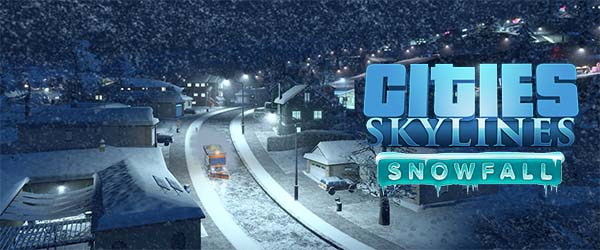
I described Cities: Skylines' first expansion, After Dark, as " just tak[ing] the Cities: Skylines canvas, and offer[ing] the player a few more colors to optionally paint with." That expansion didn't really do much to change the way that the game is really played, but rather just focused on adding further specialization options for any city that you care to build. I wasn't too upset because the core game is still a phenomenal foundation to build upon, and the expansion just gave us more to play with within that same phenomenal foundation. Snowfall, however, is even more narrow in scope. It offers one new color to paint with, and that color is white.
I got really excited when I loaded up Steam and saw the title of the new expansion. I had written a wishlist blog in which I specifically asked for the next expansion to offer seasonal weather changes and more recreational and transportation specializations suited to those different seasons. On the surface, Snowfall seemed to provide that. There's now a winter, and snow, and you can build a specialized winter wonderland. But that's the extent of what this expansion provides, and that's disappointing.
Snowfall doesn't provide a full season system or any real changes to the game's core economic loop. Instead, it has a few snowy, winter-themed maps in which you can build snow-themed cities. Those winter maps are always snowy, and the non-winter maps are never snowy (although they can see occasional rain and fog). Note: I'm going to get real tired of saying "non-winter maps", so henceforth, for the sake of simplicity, I will refer to them as "summer maps", even though summer isn't really a thing (yet). Your city doesn't progress from springing to summer to autumn to winter (or even just from summer to winter) and then back again, and you don't have to manage your economy so as to maximize profits during your tourist season and find a way to maintain employment and revenue during the off season. Depending on which map you select, it's either always winter, or it's always summer.
I complained about After Dark feeling like I had to go out of my way in order to use the expansions new features and specializations, but at least those features and specializations were available in all cities, and they could be applied to my existing cities from before the expansion. You have to go so far out of your way to use the Snowfall features that you have to start a whole new game on a specific subset of maps. It makes After Dark look like a broad game-changing expansion by comparison.
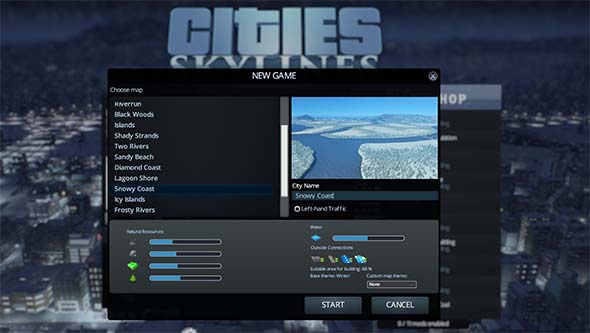
Only maps designated as "winter" maps will have snowfall, and they aren't very different from existing maps.
Disconnected from reality
The actual functionality of some of these winter buildings is also questionable. One of the first snow buildings that you'll unlock is the "snow dump", which is a landfill for snow. Snow plows in this game will drive around the city similar to garbage trucks, actually collecting the snow off the streets, and then taking them back to the snow dump building, which (according to its description) melts down the snow to make room for more snow. It seems like they just took the garbage truck functionality and copy-pasted it to apply to snow, only without the need for a separate incinerator building.
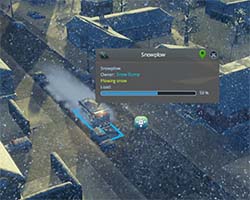
Snow can slow traffic and must be plowed.
The really weird thing is that there is also a new general road maintenance office that keeps the roads in good repair and traffic flowing smoothly. If you don't bother to build the road maintenance office, or build the snow dump or plow the snow, it will slow down your roads and eventually make them unusable. Why did these need to be two buildings? Why couldn't the road maintenance office also be the depot for snow plows?
And then there's the ski buildings, which also don't seem to work in any way comparable to real life. The ski resort is an artificial ramp that you build on flat ground. Again, that's not really how ski resorts work. Typically, a ski resort would be built high up on a mountain, where there's a natural slope and a lot of snow. The game does include a separate ski lodge building, which you could build up in a mountain, but it wouldn't work all that well. It seems to me that the Ski Resort shouldn't be a ramp, it should just be the ski lift that you build on inclined terrain, and the Ski Lodge should be built nearby and should enhance the functionality of the resort. In fact, the new snow maps don't even include mountainous terrain on which to build a more realistic ski resort and lodge. So this all seems to be a result of the game's underlying framework not having very good support for building on slopes, and Colossal Order didn't bother to design a system to allow such niche buildings like a ski resort to be built on a slope.
I may live in a desert, but I'm pretty sure that this isn't how snow plowing or ski resorts are supposed to work...
Look, I live in the desert of Las Vegas, where it was 80 degrees by mid-February, and air conditioning is not an "option" for a car. Maybe it's not my place to tell a development team in Finland how ski resorts and snow plowing are supposed to work, but I'm pretty sure that this isn't how ski resorts and snow plows work!
Don't get me wrong, these buildings are all functional, and they all work within the game's existing mechanic set. It isn't like they are broken; they're just not very realistic, and they have a disappointing feeling of sameness to them, since they don't feel functionally distinct from buildings and features that already exist. For games like this, I tend to lean towards wanting more realism whenever possible, but that's a subjective personal preference. I understand that this is just a game, and certain amounts of abstraction and creative license need to be taken... [More]
1d6478f3-d83d-487b-a545-922d69eb8b1b|6|4.2
Tags:Cities: Skylines, Cities: Skylines: Snowfall, expansion, Paradox Interactive, Colossal Order Ltd., PC, Steam, Steam Workshop, city simulation, weather, snow, rain, fog, skiing, snowboarding, sky resort, ski lodge, heating, geothermal, cold, temperature
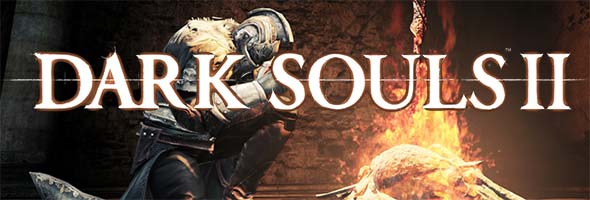
I've been trying to get myself hyped up for Dark Souls III by playing through the Scholar of the First Sin edition of Dark Souls II. I made myself a knight character as well as a sorcerer character. I hadn't played as a dedicated caster in the original release, so I made the sorcerer my primary character for Scholar.
So I put myself through the misery of trying to farm the Lizard Staff for my sorcerer character. This staff is one of the three or four best staves in the game (for Int-based sorcerers), but it's extremely rare. It is only dropped by the two Hollow Black Mages that accompany the Executioner's Chariot in the Undead Purgatory. So it's only even possible to acquire in this one, specific location in the game, and once you beat the boss, the mages don't respawn. So it's even harder than trying to farm the Sea Bow or other such items, because you can't simply go back to the area later and farm the enemies.
To make matters worse, I didn't realize that this staff could be acquired here, so I made the mistake of killing the boss early in the game (before I had equipment to raise my item discovery rate). So the only way for me to acquire this staff now would be to warp to the Undead Purgatory bonfire, use a Bonfire Ascetic to respawn the boss, fight may way back through the Huntsman's Copse, and hope to get the rare drop. I had to fight harder versions of the Purgatory Executioners. It was tough, but doable. I was able to lure them out one at a time and easily dispatch them. It's only if they ganged up on me that I had problems. But then I also had to get past the Red Phantom Tower Knight (who now respawns because of the Bonfire Ascetic). I died several times trying to run past them all, as the Tower Knight's weapon tracking was pretty spot-on. Eventually, I resorted to spell-sniping him from just outside his pursuit range. It was cheap, but I wasn't here to fight, I was here to farm a staff.
The Lizard Staff and Sea Bow are among several items in Dark Souls II that are extremely rare drops.
Then I made it into the Executioner's Chariot boss fight, and I died. And then I died again. And again. This was getting tedious.
Bonfire Ascetics, Soul Memory, and grinding / farming in Dark Souls II
I hate grinding and farming in games. I really do. It's something that I really don't think games need to have anymore. It was something that worked fine when games were relatively short, and grinding or farming for obscure items and secrets was a challenge reserved for the most dedicated players. But Dark Souls II is already long enough without including grinding for hours for rare item drops. It's one thing to hide items behind secret bosses or particularly tough challenges, such that the item is a symbol for overcoming a challenge. It's a totally different thing to hide items behind random drops from enemies that appear literally in one spot in the entire game, and who despawn after beating them.
In Dark Souls II's case, there's even mechanical reasons why this sort of grinding or farming should not be in the game. And that reason is Soul Memory... [More]
67cbe268-c8f0-446d-b36e-1cf6e7d9ec41|4|4.3
Tags:Dark Souls, Dark Souls II, Dark Souls II: Scholar of the First Sin, Scholar of the First Sin, Lizard Staff, sorcerer, mage, Huntsman's Copse, Undead Pergatory, Executioner's Chariot, skeleton, yearn, spell, amber herb, rusted coin, bonfire ascetic, soul memory, farming, grinding, PSN, PSPlus, cloud, PS4, Hidetaka Miyazaki

In the comments of a recent post about Silent Hill 2's Otherworld, I had a discussion with a reader about the time period in which the Silent Hill games take place. This is actually an interesting and difficult topic, so I thought that I would dedicate a post specifically to it.
First and foremost, let's remind ourselves of when the games were released:
| Game title | Original release |
 | Silent Hill | January 1999 |
 | Silent Hill 2 | September 2001 |
 | Silent Hill 3 | May 2003 |
 | Silent Hill 4: the Room | September 2004 |
UPDATE 1 January 2020:
A recent tweet from Masahiro Ito claimed that Silent Hill 2 was set in the "late 70's or early 80's", which would make my estimates about 10 later than Masahiro Ito understood the setting to be. If we take evidence in the first Silent Hill game at face value, this would mean that Silent Hill 2 would have to take place prior to the events of Silent Hill, since Silent Hill can take place no earlier than 1987.
It is also possible that Ito's comment is referring to the aesthetics of the game (in keeping with many of the game's film and literary influences), and not necessarily to its actual timeline. It isn't that I don't trust Ito's memory or his authority, but Team Silent went to great pains to conceal the exact date of the games (as we'll discuss in the following post), so it seems that they wanted the years in which the games take place to be ambiguous to the players -- which kind of makes this entire exercise moot.
Contemporary fiction
It is very important to note that no specific dates ever appear in any of the Silent Hill games that were developed by Konami's internal Team Silent studio. If dates are provided, they are either only the month and day (and not the year), or they are time periods relative to the events of the game (such as referring to the "events of 17 years ago" in Silent Hill 3), or it is just the year of an historical event in the past (such as the document about the sinking of the Little Baroness). Even documents that you would expect to have dates (such as newspapers, journals, diaries, patient reports, and police records) are intentionally left dateless (or at least ambiguous).
In Silent Hill 2, there is a point in which James finds newspapers scattered around a hallway. Upon examining the floor or walls, James comments that the newspapers have today's date. This would have been a perfect opportunity for the developers to provide a specific date for the game, if they wanted to. They could have had James read the date on the paper to the player, or the paper itself (with its date) could have been made clearly visible. The developers didn't do this; they left it completely ambiguous.
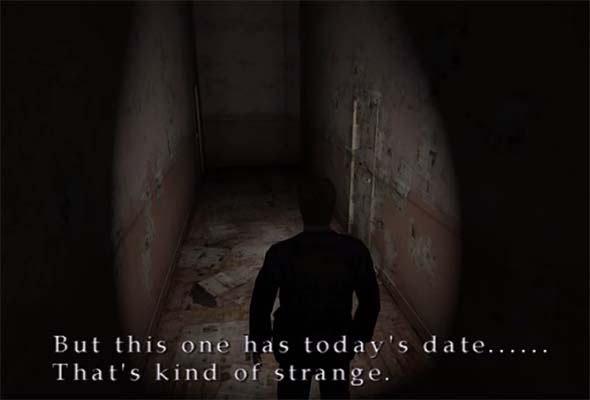
James notes that these newspapers have today's date, but doesn't tell us what the date is.
The developers went out of their way to not provide any specific dates for the games. Why would they do this? Typically, works of fiction that are not set in particular time period are written to be contemporary. Unless otherwise specified, most works of fiction should be assumed to take place now with respect to the consumption of the work by its audience, regardless of when "now" happens to be. if it's not contemporary to consumption, then it's usually contemporary to creation. This is usually pretty obvious if the work contains detailed descriptions of locations, technologies, and events that can be easily dated.
If we look at the original Silent Hill game in a vacuum, then the game provides no internal indication that it takes place at any specific time period. Players in 1999 probably had no reason to believe that the game took place in any year other than 1999. The same is true for Silent Hill 2, 3, and 4: if looked at in a vacuum, they can all be considered to take place in the same year that they were released. And if you didn't even know the year that the game was released, there's very little within the games to indicate that they take place at any time other than now.
However, this assumption falls apart because there is an absolute time difference of seventeen years between the events of the first game and the events of the third game, even though the difference in time between releases of the games was only four years. So we can't assume that each game takes place in the year of its release. At least one game has to be shifted on the timeline. So which game (or games) should be assumed to have taken place when? [More]
0ad2a2d3-abbc-4fd7-b255-126a5de4f3ba|8|4.8
Tags:Silent Hill, Silent Hill 2, Silent Hill 3, Silent Hill 4: the Room, history, Harry Mason, Heather Mason, James Sunderland, Maria, Henry Townshend, 1980s, 1990s, 2000s, 1986, 1987, 1994, 1999, 2003, 2008, 2016, Jeep Wrangler, telephone, cell phone, smart phone, rotary phone, computer, television, technology, anachronism, timeline, Konami, Team Silent, The Silence of the Lambs, Mary Shepherd-Sunderland
|

| 12 | | | | | | | 60 | | 11 | | | | | | | 55 | | 10 | | | | | | | 50 | | 09 | | | | | | | 45 | | 08 | | | | | | | 40 | | 07 | | | | | | | 35 | | 06 | | | | | | | 30 | | 05 | | | | | | | 25 | | 04 | | | | | | | 20 | | 03 | | | | | | | 15 | | 02 | | | | | | | 10 | | 01 | | | | | | | 05 |
|